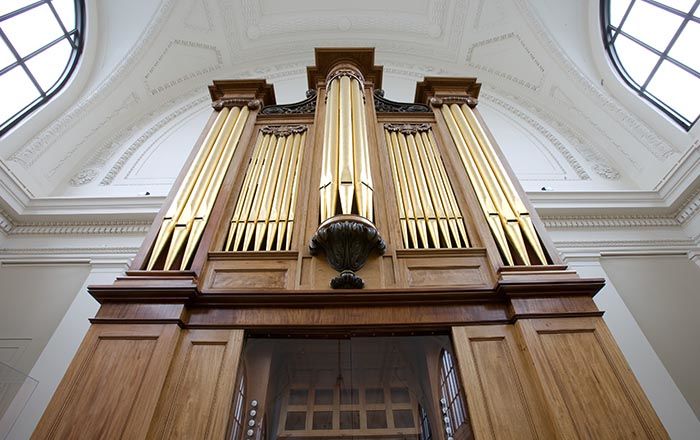Clarinet in E-flat
Ferdinand Zogbaum American
Not on view
Ferdinand Zogbaum had a workshop in Charleston ca. 1852 and moved to New York ca. 1854. When Rufus Fairchild joined the company in 1858 it became Zogbaum & Fairchild. The workshop flourished until after 1880. (Nancy Groce, Musical Instrument Makers of New York, 176-177.)
Overall size: 430, 491 with mouthpiece.
Bore: c-hole 12.2; f-hole 12.2.
Conical part: 128
Technical description: Boxwood with ivory ferrules and brass keywork. Six pieces: mouthpiece, barrel, upper section, middle section for the fingers of the right hand, lower section with keys, bell. Rosewood mouthpiece not grooved for cord. Speaker liner projects ca. 4 mm into the bore. Chimney on the back of the instrument. Sixth key (C♯4/G♯5) mounted on a plate probably a later addition. Levers for L4, tone-hole and key for R4 mounted in a fusiform swelling. Integral wooden rim.
L0: T; speaker.
L1: T; throat A♮.
L2: T.
L3: T.
L4: C♯4/G♯5; E3/B♮4; F♯3/C♯5.
R1: T.
R2: T.
R3: T.
R4: T; G♯3/E♭5.
Keyhead type: flat round.
Keymount type: square turned wooden rings, swelling, screwed in pillars on plate.
Inscribed on all pieces except for mouthpiece and middle section "F. ZOGBAUM / IN / NEW-YORK / E"
(Heike Fricke, 2014)
This image cannot be enlarged, viewed at full screen, or downloaded.
This artwork is meant to be viewed from right to left. Scroll left to view more.
.jpg)

.jpg)
.jpg)
.jpg)
.jpg)
